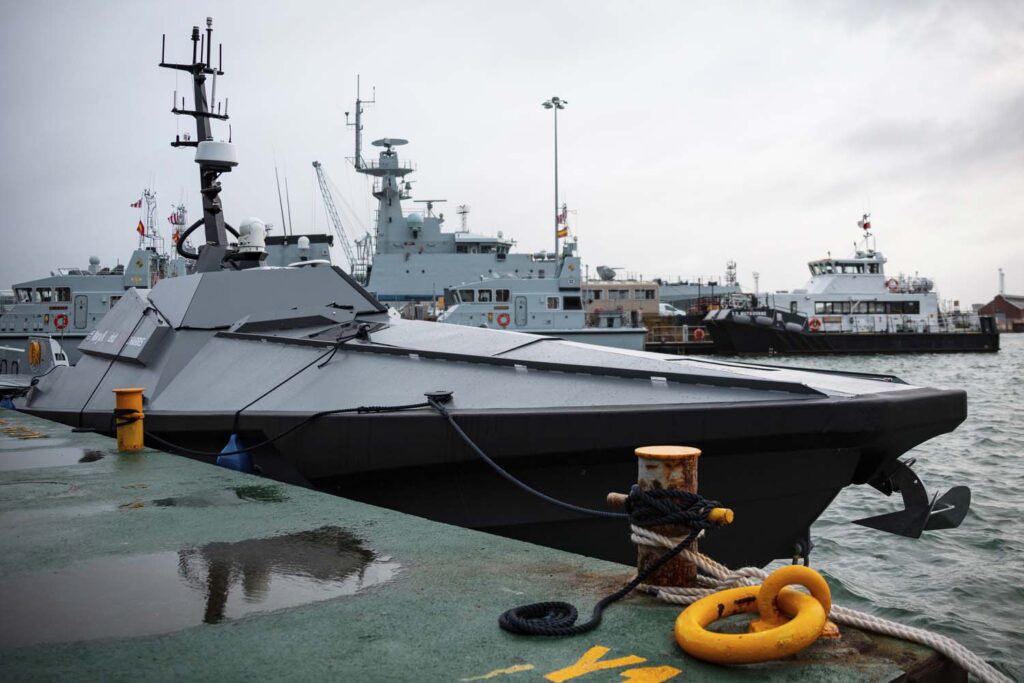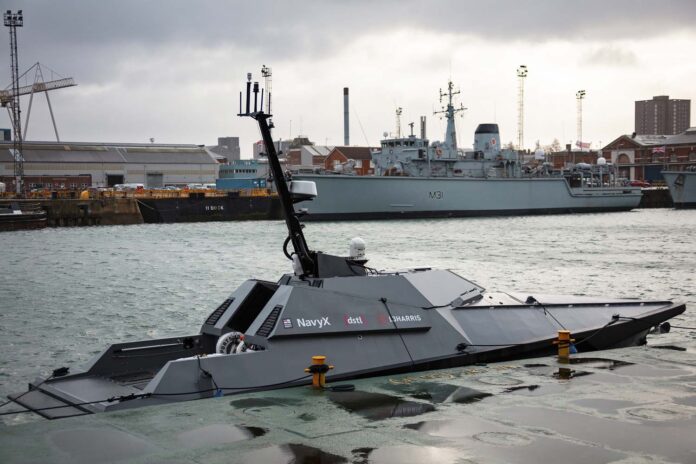The Royal Navy has officially commissioned a new autonomous vessel Madfox into the fleet. The USV is operated by the Royal Navy’s experimentation group NavyX.
Related article released by the Royal Navy as follows;
Named Madfox (Maritime Demonstrator For Operational eXperimentation), it is derived from technology firm L3Harris’ Mast-13 vessel, which for the past 18 months has been operated by Defence Science and Technology Laboratory (Dstl) on a series of trials with the Royal Navy.
Since being delivered, NavyX has been working hard to get Madfox to sea and ready to begin a demanding year of testing.
Over the next few months, NavyX will carry on its work with Uncrewed Surface Vessel (USV), while also examining how these vessels can deliver across the range of military operations including surveillance and force protection.
Commander Antony Crabb, NavyX team leader, said: “With Madfox now directly in the hands of NavyX, the team will be able to explore a multitude of issues such as safety, regulatory compliance, new missions, new payloads and the role that a USV can play in complex operations and within the future fleet.
“Later this year NavyX will also accept an autonomous Rigid Inflatable Boat (RIB) into the inventory. This exciting work will help inform how systems are deployed, and employed, from future vessels of the Type 26 and Type 31 classes.”
The investment in Madfox comes as the Royal Navy and Royal Marines look to expand their use of crewless and autonomous equipment.
Mast-13, proved the value of USVs during experimentation in Norway last year when it was successfully integrated with HMS Albion for Autonomous Advance Force 3.0. There it was controlled remotely, including for the transit in and out of the ship’s dock.

About Madfox USV (Mast-13):
The MAST-13, which was designed and built by L3Harris for Dstl (Defence Science and Technology Laboratory), is a 13-meter (41-foot) long high-speed unmanned testbed vessel intended for the Royal Navy to explore new methods of maintaining a technical advantage over potential adversaries. It was integrated into HMS Albion using the ASView control system, which allowed the unmanned vessel to be remotely controlled from a station on board the warship.
The successful integration meant that MAST-13 could operate at range from its operator and safely navigate, with full situational awareness via the on-board sensor package. The MAST-13 ASV utilises Domo Tactical Communications’ technology for secure data communications.
At the beginning of the trial, MAST-13 was remotely piloted into HMS Albion’s dock, thus demonstrating the ease of operating an ASV alongside a warship. The team then carried out 22 manned cycles of entering and retracting, before switching over to the remote station to complete the same task multiple times without an onboard crew. Using the Maritime Autonomous Platform Exploitation (MAPLE) integrated command and control system, MAST-13 also completed several other tasks in unmanned mode while sending feeds back to the remote station.



